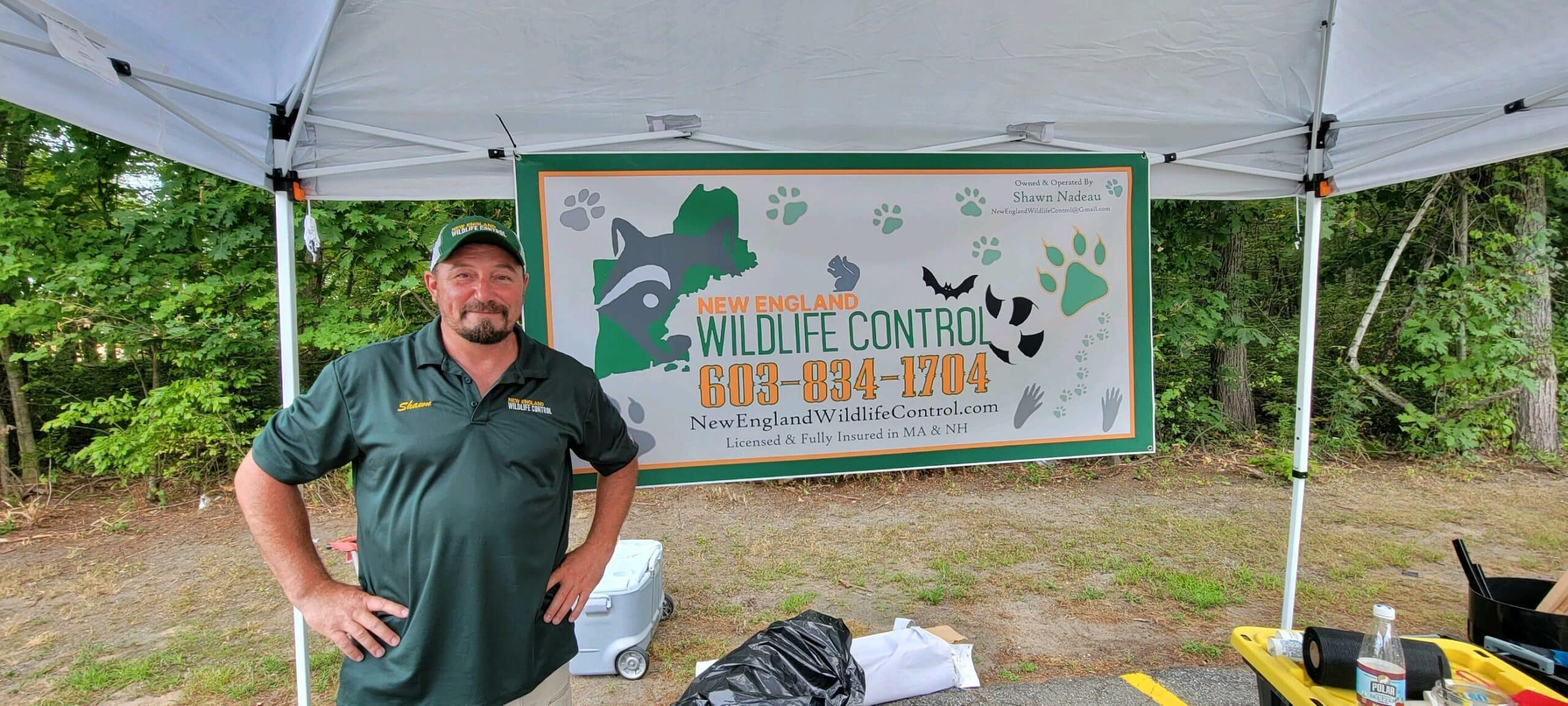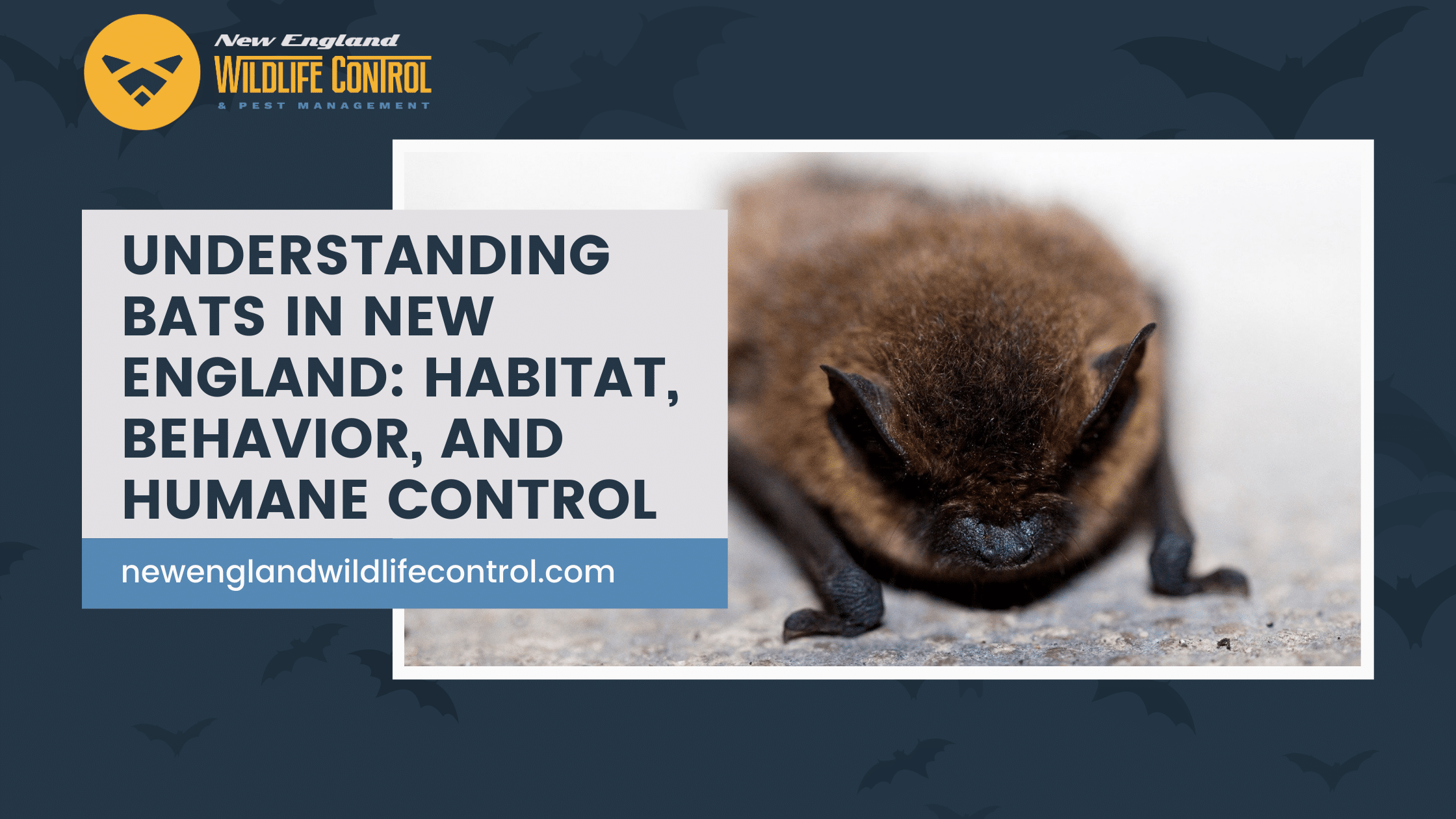Seasonal Activity of Bats in New England
As the winter chill subsides in New England, fascinating creatures emerge from hibernation – bats! These nocturnal mammals have a unique seasonal cycle that homeowners should be aware of. Bats in regions like Massachusetts are true hibernators, entering dormancy around mid-October and re-emerging in mid-April.
Common Bat Species in Massachusetts
Massachusetts boasts nine bat species. The most frequent visitors to homes are the big brown bat (Eptesicus fuscus) and the little brown bat (Myotis lucifugus). These bats often form colonies and roost inside buildings, making them noticeable presences. While caves are their natural roosting and hibernating sites, buildings can provide similar suitable environments.
Big Brown Bats vs. Little Brown Bats: Identifying Massachusetts’ Attic Dwellers
This blog post clarifies the differences between Big Brown Bats and Little Brown Bats, the two most common bat species found in Massachusetts. While their appearance is similar, their behavior and habitat preferences can help identify the culprit behind your bat infestation.
Big Brown Bats: Year-Round Residents
- Active: March through November
- Habitat: Attics, rooflines, behind rake boards
- Behavior: Explore attics, known to enter living spaces, more tolerant of cold
- Droppings: Larger than a grain of rice, with a moist odor
- Distribution: Evenly distributed across Massachusetts and Rhode Island, including urban areas
Little Brown Bats: Migratory Visitors
- Active: May through October
- Habitat: Open areas like rake boards, barns, attics without insulation
- Behavior: Less likely to enter living spaces, louder and more social than Big Brown Bats
- Droppings: Smaller than a grain of rice, with a strong ammonia-like odor
- Distribution: Unpredictable, found in clusters, more common in rural areas
Key Differences to Identify the Species
- Nose: Big Brown Bats have a longer, less furry nose compared to the short, smooshed nose of Little Brown Bats.
- Size: Big Brown Bats are generally larger with a wingspan of 11-13 inches, while Little Brown Bats have a wingspan of 6-9 inches. (Note: Size can vary with age).
- Guano: Refer to the size and odor descriptions above.
While both species can cause problems in attics, their behavior offers clues for identification. Big Brown Bats are more likely to be the ones exploring your house, whereas Little Brown Bats tend to stay in open roosting areas.
If you suspect a bat infestation, contact a qualified wildlife removal company for safe and humane bat removal such as New England Wildlife Control.

Spring Activity and Potential Entry Points for Bats in Homes
With the arrival of spring sunshine, attics and rooflines warm up, prompting bats to awaken and become active. This can sometimes lead to gentle scratching noises or high-pitched vocalizations. South-facing sides of houses, which receive the most sunlight, are particularly attractive to bats. They often gain entry through openings like gable vents, soffit overhangs, fascia gaps, and other cracks on this side of the home.
Impact of White-Nose Syndrome on Bat Populations
The little brown bat population in Massachusetts has suffered tremendously due to white-nose syndrome, a fungal disease that has devastated their numbers by over 99% in the region. Since they are a protected species, there are specific protocols and timeframes for safe bat removal, typically during May, August, September, and parts of October. Eviction is not permitted during their breeding season (June and July) to prevent orphaning pups.
Alternatives to Bat Removal and Conservation Efforts
Installing bat houses on your property can provide evicted bats with an alternative roosting location. These houses should be strategically mounted to offer bats a safe and warm place during warmer months. This can help with humane bat control efforts.
The Importance of Bats and Their Management
Bats are crucial players in the ecosystem. Despite their sometimes unsettling appearance, they provide excellent insect control and are significant pollinators. However, bats inside your home can pose health risks due to guano accumulation and the presence of bat bugs. Therefore, safe and humane management is key to balancing their ecological benefits with homeowner safety.
“Each bat removal job is a reminder of the delicate balance between human habitation and wildlife. By approaching these situations with care and respect, we can coexist peacefully with the creatures that share our environment.” – Shawn Nadeau, owner / operator of NEWC.
When to Call a Wildlife Removal Company
While DIY solutions exist for bat exclusion, it’s advisable to consult a professional wildlife removal company in New England Wildlife Control if you suspect a bat infestation. We have the expertise and equipment to safely and humanely remove bats from your home while adhering to local regulations. Wildlife removal specialists can also help seal potential entry points to prevent future bat problems. (exclusion services)
Additional Resources
- Massachusetts Department of Fish and Game (https://www.mass.gov/orgs/division-of-fisheries-and-wildlife) for information on bat eviction procedures and bat house installation.
- National Wildlife Federation (https://www.nwf.org/) for more information on bat biology and conservation.



